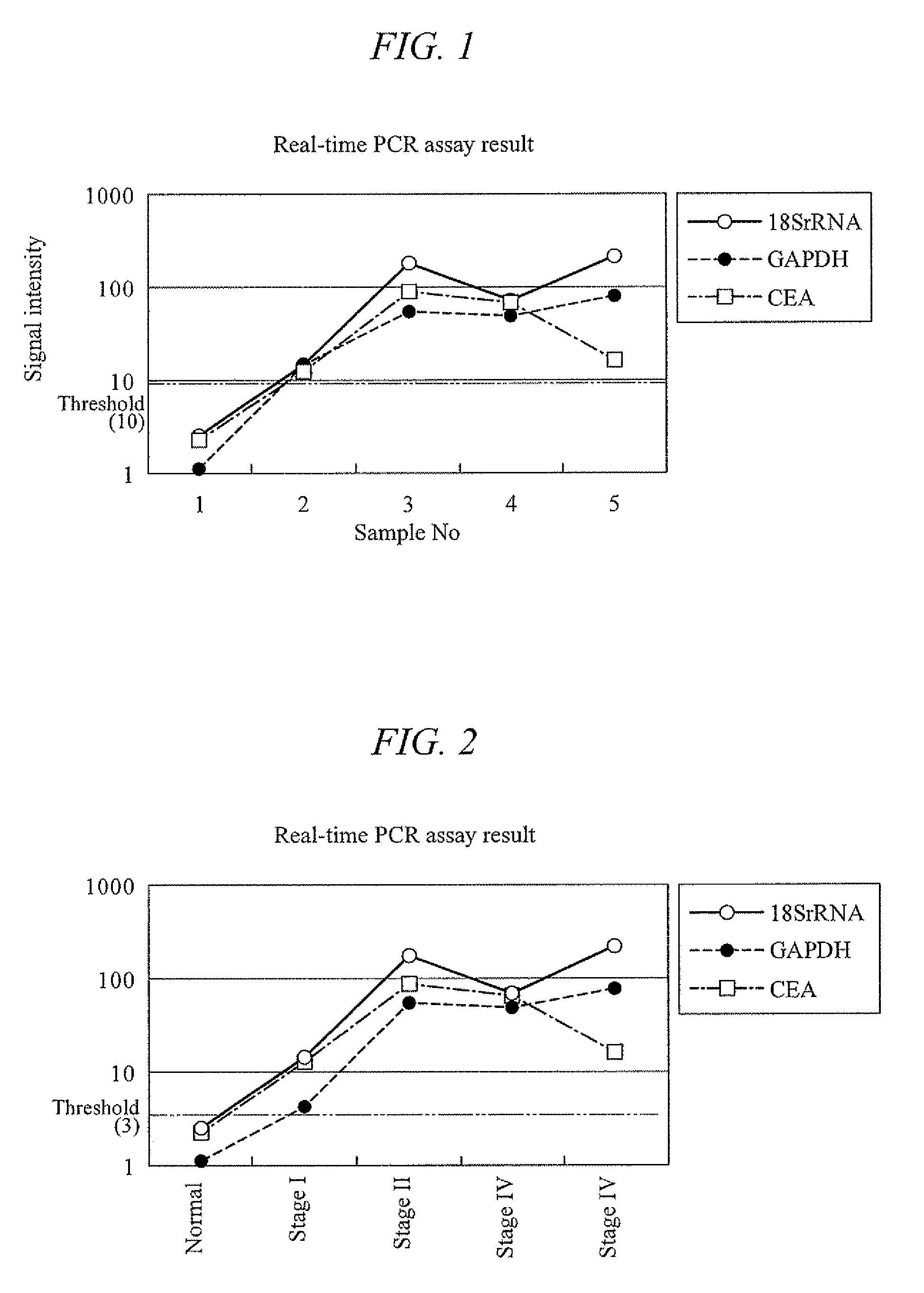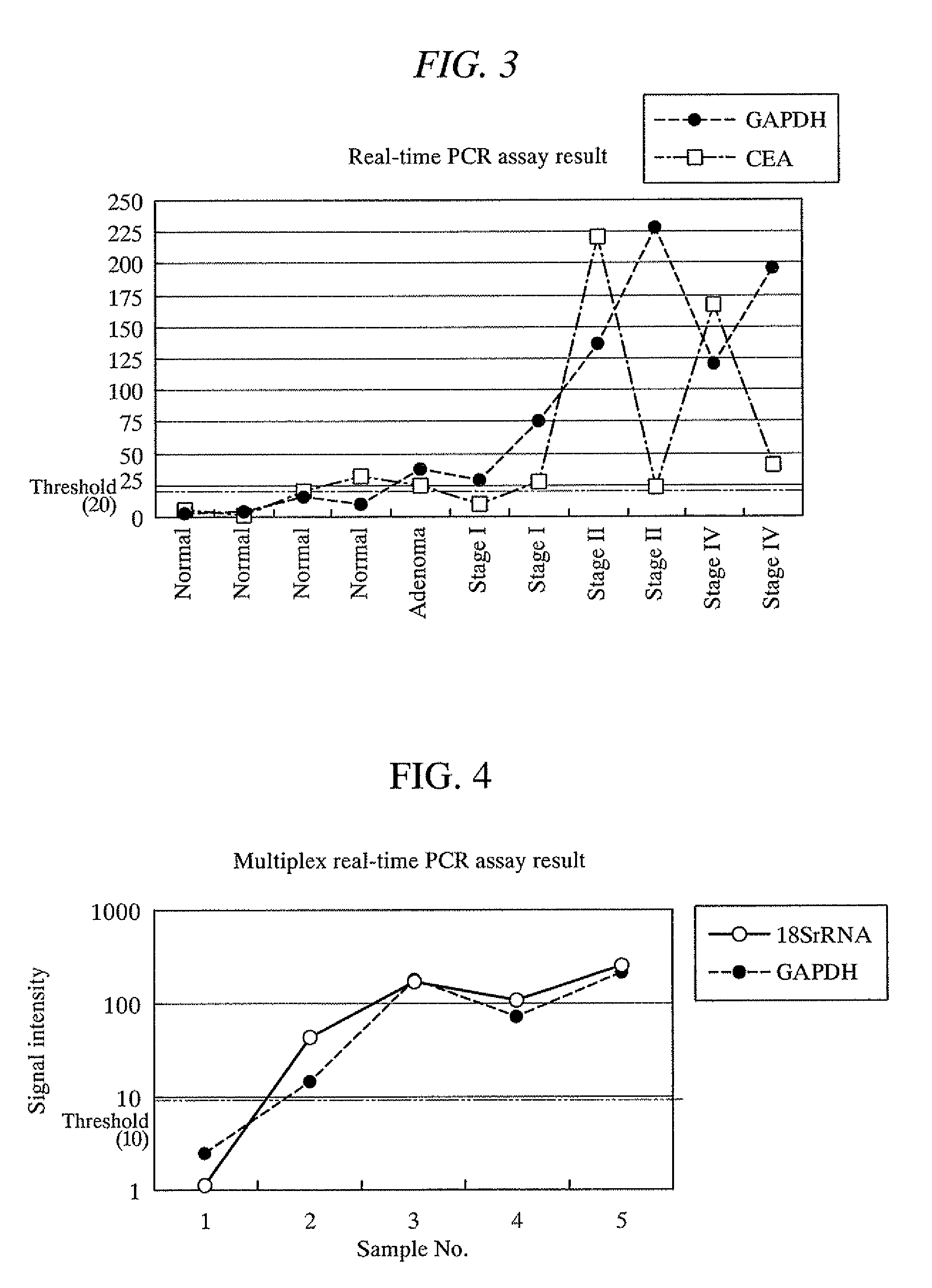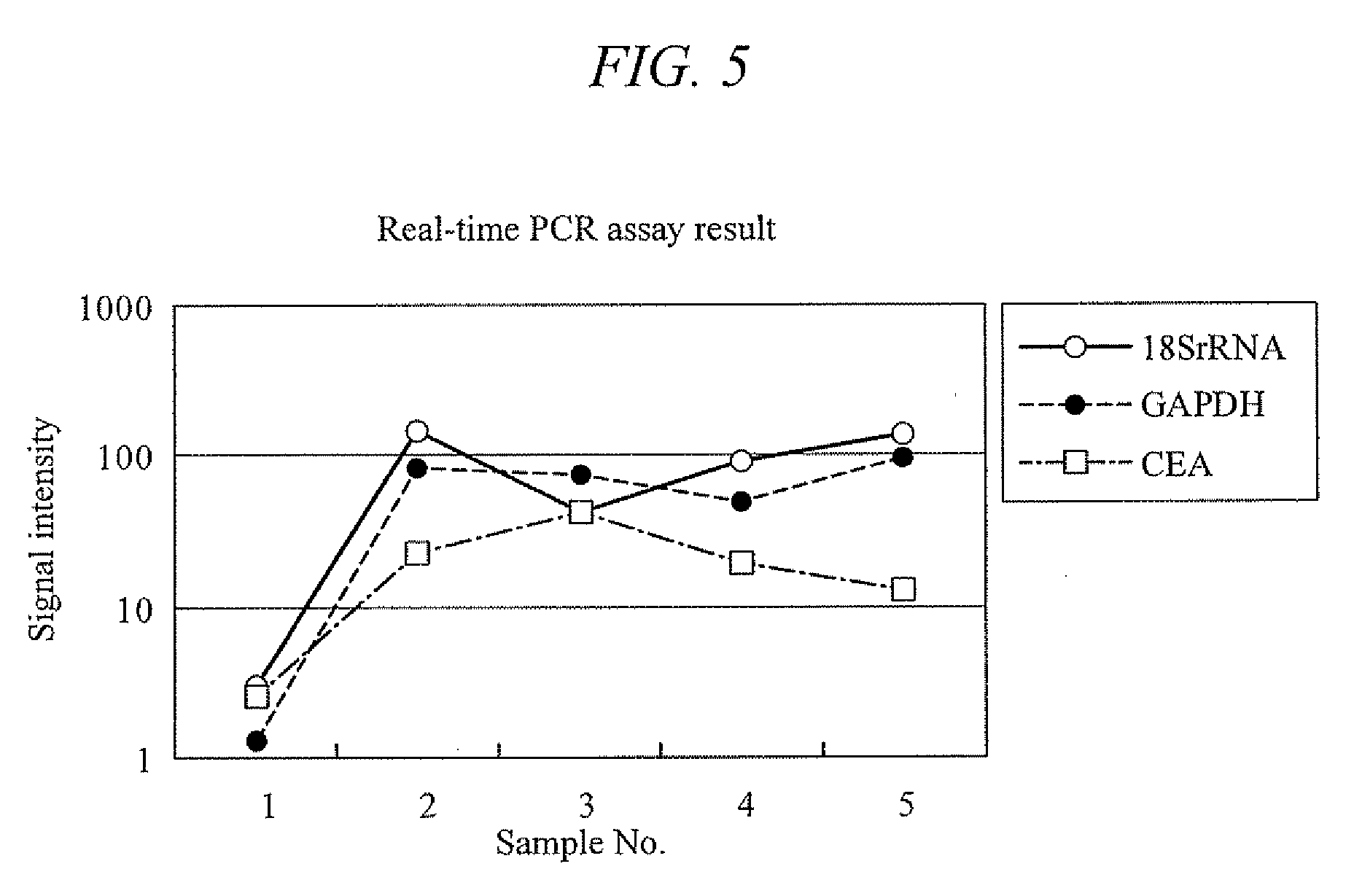Method for detection of adenoma or cancer by genetic analysis
a technology of genetic analysis and adenoma, applied in the direction of microbiological testing/measurement, biochemistry apparatus and processes, etc., can solve the problems of false positives and false positives, the validity of the process for measuring samples, and the reliability of the test is not considered at all, so as to reduce waste of time and cost for specifying the point, and the detection of sensitive and simpler cancers. , the effect of reliable test results
- Summary
- Abstract
- Description
- Claims
- Application Information
AI Technical Summary
Benefits of technology
Problems solved by technology
Method used
Image
Examples
example 1
(Methods)
[0154]Feces was collected from a healthy subject, 6 g of which was placed in a 15 ml tube (manufactured by FALCON) and evenly mixed. Then, the mixture was divided into six samples of 1 g each. Of these, one sample was frozen at −20° C. for the analysis to come and preserved at −20° C. as it was. The remaining five samples were used right after the sampling, one of which was used as it was, and the remaining four were each added with 1 ml of the colon cancer cell line CCK-81. These samples were then respectively added with 5 ml of PBS, and mixed with a homogenizer to yield homogenized products. The homogenized samples were centrifuged at 4000×g for 10 minutes. Their supernatants were taken and RNA was extracted therefrom with the QIAGEN's RNeasy kit. A portion of each extracted RNA, 21.5 μl of RNase-free water, 25 μl of 2× TaqMan Universal PCR Master Mix, and 2.5 μl of a primer / probe set respectively for CEA, GAPDH, and 18S rRNA (manufactured by Applied Biosystems) were put ...
example 2
[0158]Feces were collected from one healthy subject and four colon cancer patients (stages I to IV), and 1 g of each sample was respectively placed in a 15 ml tube (manufactured by FALCON). Right after the sampling, the specimen samples were frozen at −80° C., and then added with an acid phenol-guanidine-chloroform solution. These samples were homogenized with a homogenizer. The homogenized samples were centrifuged at 4000×g for 10 minutes. Their supernatants were taken and RNA was extracted therefrom with the QIAGEN's RNeasy kit. A portion of each extracted RNA, 21.5 μl of RNase-free water, 25 μl of 2× TaqMan Universal PCR Master Mix, and 2.5 μl of a primer / probe set respectively for CEA, GAPDH, and 18S rRNA (manufactured by Applied Biosystems) were put in a 0.2 ml PCR tube and mixed therein. The probe used here was a reporter probe having a fluorophore at one end and a quencher at the other end. These mixtures were subjected to nucleic acid amplification with a real-time fluoresce...
example 3
[0162]Feces were collected from four healthy subjects, one adenoma carrier, and seven colon cancer patients (stages I to IV), and 1 g of each sample was respectively placed in a 15 ml tube (manufactured by FALCON). Right after the sampling, the specimen samples were frozen at −80° C., and then added with an acid phenol-guanidine-chloroform solution. These samples were homogenized with a homogenizer. In the same manner as that of Example 2, RNA was extracted from the homogenized samples. A portion of each extracted RNA, 21.5 μl of RNase-free water, 25 μl of 2× TaqMan Universal PCR Master Mix, and 2.5 μl of a primer / probe set respectively for CEA and GAPDH (manufactured by Applied Biosystems) were put in a 0.2 ml PCR tube and mixed therein. The probe used here was a reporter probe having a fluorophore at one end and a quencher at the other end. These mixtures were subjected to nucleic acid amplification with a real-time fluorescence assay under a temperature condition consisting of on...
PUM
| Property | Measurement | Unit |
|---|---|---|
| Temperature | aaaaa | aaaaa |
| Electrical conductance | aaaaa | aaaaa |
| Nanoscale particle size | aaaaa | aaaaa |
Abstract
Description
Claims
Application Information
 Login to View More
Login to View More - R&D
- Intellectual Property
- Life Sciences
- Materials
- Tech Scout
- Unparalleled Data Quality
- Higher Quality Content
- 60% Fewer Hallucinations
Browse by: Latest US Patents, China's latest patents, Technical Efficacy Thesaurus, Application Domain, Technology Topic, Popular Technical Reports.
© 2025 PatSnap. All rights reserved.Legal|Privacy policy|Modern Slavery Act Transparency Statement|Sitemap|About US| Contact US: help@patsnap.com



